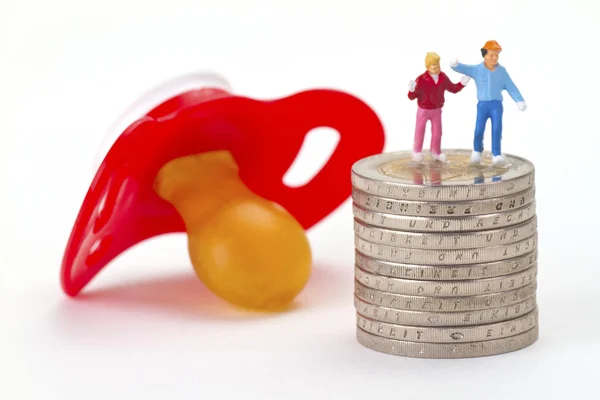
Kids learn about money long before their first paycheck. In 2025, that “money” is increasingly digital—swipes, taps, in-app credits, and yes, even Bitcoin headlines your child will definitely encounter on YouTube or at school. You don’t have to be a trader to raise financially confident kids; you just need clear routines, plain language, and the right guardrails. This guide shows how to introduce value, saving, and smart risk—starting with coins and chores, then graduating to budgets, wallets, and a beginner’s view of Bitcoin.
The Three-Jar System (Still the Best First Lesson)
Before you mention crypto or cards, teach the feeling of allocation. Use three physical jars or digital “buckets” labeled Spend, Save, and Share. When allowance or gift money arrives, your child splits it—say 60/30/10. The win isn’t the math; it’s the muscle of making choices. Over time, connect each bucket to goals: spending on a weekend treat, saving for headphones, sharing with a cause they choose. This is your family’s first “portfolio,” and kids love watching it grow.
From Jars to a Simple Budget
For ages 9–12, upgrade to a one-page budget. Columns: Income (allowance, odd jobs), Planned (goals per bucket), and Actual (what happened). Review together once a month. Treat mistakes as data, not drama: “We overspent on snacks; let’s raise the Save bucket for two weeks.” These micro debriefs teach accountability without shame.
What Kids Really Need to Know About Bitcoin
- It’s money, but different: Bitcoin is digital and not controlled by a single company or government. That independence is interesting—but it also means you’re responsible for security.
- Prices move—fast: Explain volatility with a chart of a familiar item (ice cream prices vs. BTC). If they want exposure, start with “learners’ amounts” they can afford to see swing.
- Keys, not just balances: In crypto, access is controlled by secret keys. Losing them means losing funds. That’s why beginners start with tiny sums and lots of backups.
Age-Smart Activities (No Hype Required)
| Age | Activity | Parent Tip |
|---|---|---|
| 6–8 | Sticker chart for chores + three jars | Let kids choose the “Share” cause to build intrinsic motivation |
| 9–12 | One-page budget; introduce “needs vs. wants” game at the store | Ask, “What trades are we making?”—time, money, patience |
| 13–15 | Open a teen debit card with spend limits; simulate a small BTC “practice” line in the budget | Require a written plan: goal, amount, stop rules, and how to track |
| 16–18 | Teach paychecks, taxes, and long-term saving. If curious, try a micro BTC purchase with strict rules and a security checklist | Make security a ritual: unique passwords, 2FA, and written backups |
Design a “Beginner BTC Experiment” the Right Way
If your teen is curious about Bitcoin, treat it like a science project—not a gamble. Outline the hypothesis (“I want to see how price moves over a month”), the budget (coffee-money only), the tools, and the safety checklist. Use a plain-English flow:
- Plan the tiny amount. This is education, not investing. Tie it to chores or a completed course.
- Choose an on-ramp. For transparency and comparison shopping, beginners can use an exchange aggregator that shows multiple partner offers and lets you pick between fixed or floating quotes before buying Bitcoin with a card or bank payment. One such option is this service, which provides a guided, step-by-step checkout and routes you through a provider you select. :contentReference[oaicite:0]{index=0}
- Move to a wallet the family controls. Start with a reputable mobile wallet and a written backup phrase stored offline. Teach “verify before you send.”
- Track “what happened.” Log date, amount, fees, TXID, and the lesson learned—win or lose.
Safety Rules Kids Will Actually Remember
- Pause before passwords: No one legitimate asks for your seed phrase—ever. If a pop-up or DM does, it’s a scam.
- Two-factor, always: Use app-based 2FA for email and any account touching money. No SMS codes if you can avoid it.
- Family review: For teens, require a “two-signature” rule for any transaction above a set amount: teen initiates, parent approves.
Screen Time, Ads, and “Get-Rich Quick” Culture
Money messages hit kids constantly—creator sizzle reels, meme coins, “signals.” Build a habit of analysis: What’s the claim? Who benefits? What happens if we’re wrong? Pair every video with a real-world action (budget, jar move, or a mock trade in a spreadsheet). You’re redirecting energy fro
Latest posts by Alicia (see all)
- Raising Money-Smart Kids in a Digital World: A Parent’s Guide to Bitcoin, Budgets, and Better Habits - October 5, 2025
- How Supporting Your Family Through Sports Builds Stronger Bonds - September 17, 2025
- Raising Resilient Kids in a Modern World: Lessons from Life and Lifestyle - September 9, 2025